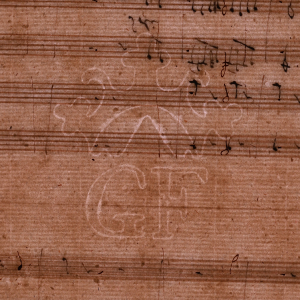- Function
-
- Composer
- Biography
António Leal Moreira (1758-1819) was an organist and composer whom Viera (1900) ranked alongside his younger Portuguese contemporaries, João José Baldi and Marcos Portugal. A letter written in 1783 by the Guarda-jóias do reino, João António Pinto da Silva, indicates that contemporaries regarded him as a disciple of João de Sousa Carvalho and as a leading composer of serenatas in the early part of his career (Fernandes 2009, pp. 230-231).
Leal Moreira was admitted to the Seminário Patriarcal in June 1766, graduating to become an assistant to the music masters there in April 1775 (Vieira 1900, p. 106; Gama 1997, p. 119); it was an institution with which he was closely associated throughout his career and where he finally became a master in February 1787 (Fernandes 2009, p. 379; Bernardes 2015, pp. 24-24). In 1780, his salary was raised by 40$000 réis for serving, in addition, as a composer, a function he had assumed before then but without extra payment (Fernandes 2009, pp. 226, 379). Early in his career he composed music for important occasions, including a mass for the acclamation of Maria I in 1777. Ricardo Bernardes has argued that the music for this mass survives as a set of parts in the Fundo do Conde de Redondo (P-Ln, F.C.R. 138//4) (Bernardes 2015, pp. 143-147).
Leal Moreira, in 1790, was music director at the Rua dos Condes theatre and of the newly constructed S. Carlos theatre, in 1793 (Vieira 1900, pp. 107-108), for which he wrote the music for operas and other dramatic works in Italian and Portuguese. His theatrical career ended with Il disertore francese, performed in Milan and Turin in 1800 (Vieira 1900, p. 109). His later career as a composer was devoted to sacred music. His importance as an organist and master of the Patriarchal church was noted by the seminary Inspector, Jozé Joaquim Barba Alando de Menezes, who highlighted his 44 years of dedicated service and spoke of the difficulty of filling his place at his death. Leal Moreira continued to be active as a composer until the very end of his life, dedicating the motet ‘Festo Inventionis Sancto Crucis’ (P-Ln, F.C.R. 138//07) to the Marques de Borba, written for performance at the marquess’s private chapel at the Bom Jardim, in 1818.
Several autographs of Leal Moreira are preserved at P-Ln; others are at P-La, P-EVc, P-Lf and P-Mp. A distinguishing feature of some of Leal Moreira’s late autographs is the writing of bar numbers at the bottom right-hand corner of each system or at the ends of movements (e.g. in P-Ln, M.M. 128//9, F.C.R. 138//07 and F.C.R. 138//15).
Ricardo Bernardes, ‘Estudo das Características Estilístico-musicais das Missas de António Leal Moreira (1758-1819): A Missa para a Aclamação de D. Maria I (1777)’, PhD thesis (Universidade Nova de Lisboa, 2015).
Manuel Carlos de Brito and Robert Stevenson, ‘Moreira, António Leal’, Oxford Music Online: Grove Music Online (2001) [https://doi.org/10.1093/gmo/9781561592630.article.19105]
Cristina Fernandes, ‘O sistema produtivo da Música Sacra em Portugal no final do Antigo Regime: a Capela Real e a Patriarcal entre 1750 e 1807’, PhD thesis (Universidade de Évora, 2009).
Luís Filipe Marques da Gama, Dos leais de Sintra e Colares aos da região do Oeste: uma linhagem medieval inédita (Óbidos: Câmara Municipal de Óbidos, 1997).
Ernesto Vieira, Diccionario biographico de musicos portuguezes: historia e bibliographia da musica em Portugal, 2 vols. (Lisbon: Typographia Mattos Moreira & Pinheiro, 1900), ii, pp. 105-110, 454-456.
- Handwriting identifiers
-
- C-Clef
-
- Type 1
- Type 2
- F-Clef
-
- Type 2
- G-Clef
-
- Type 1
- Images
-
-






















































